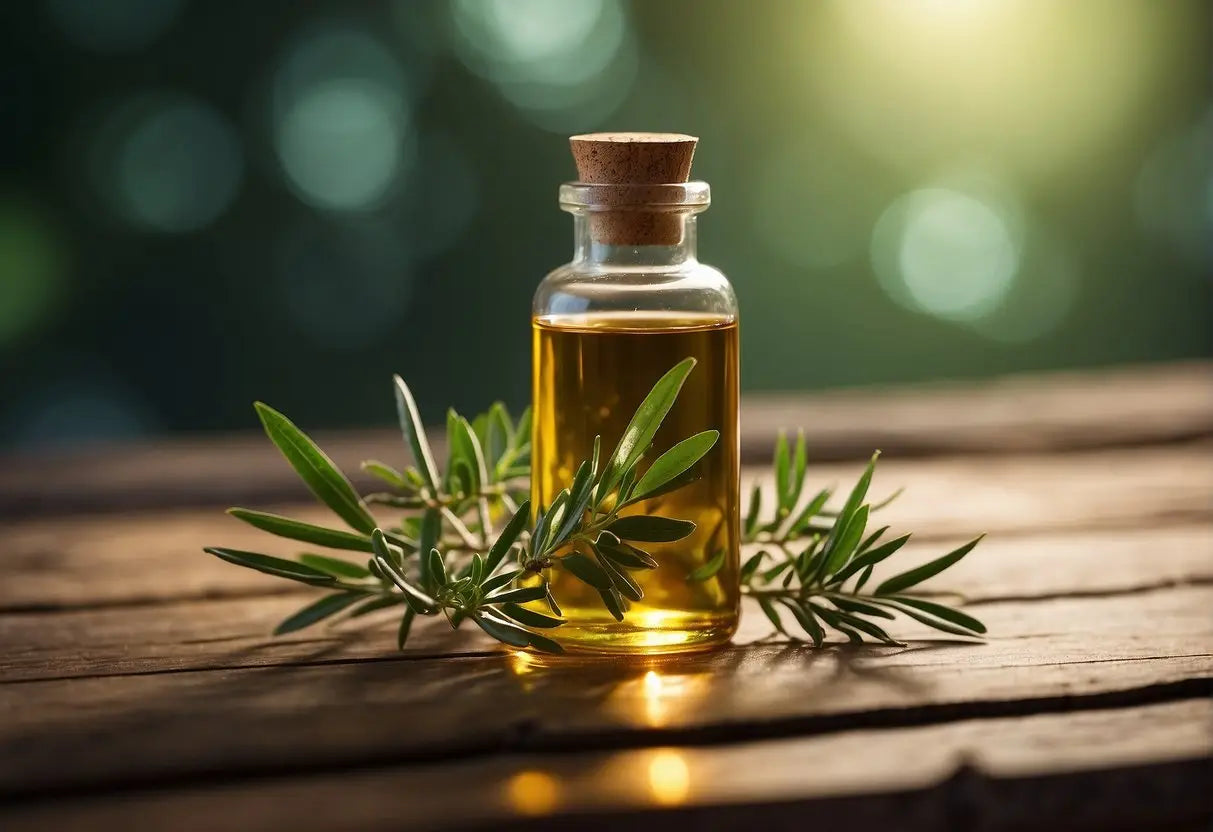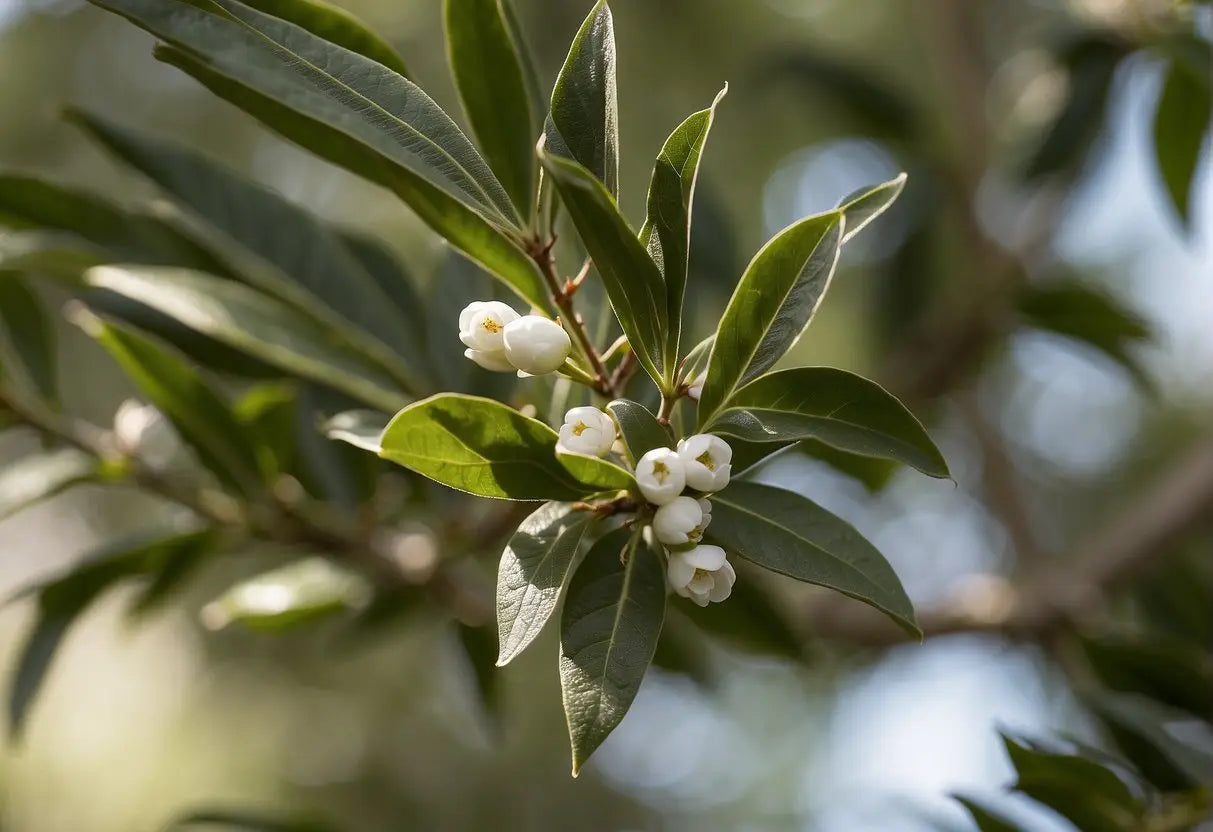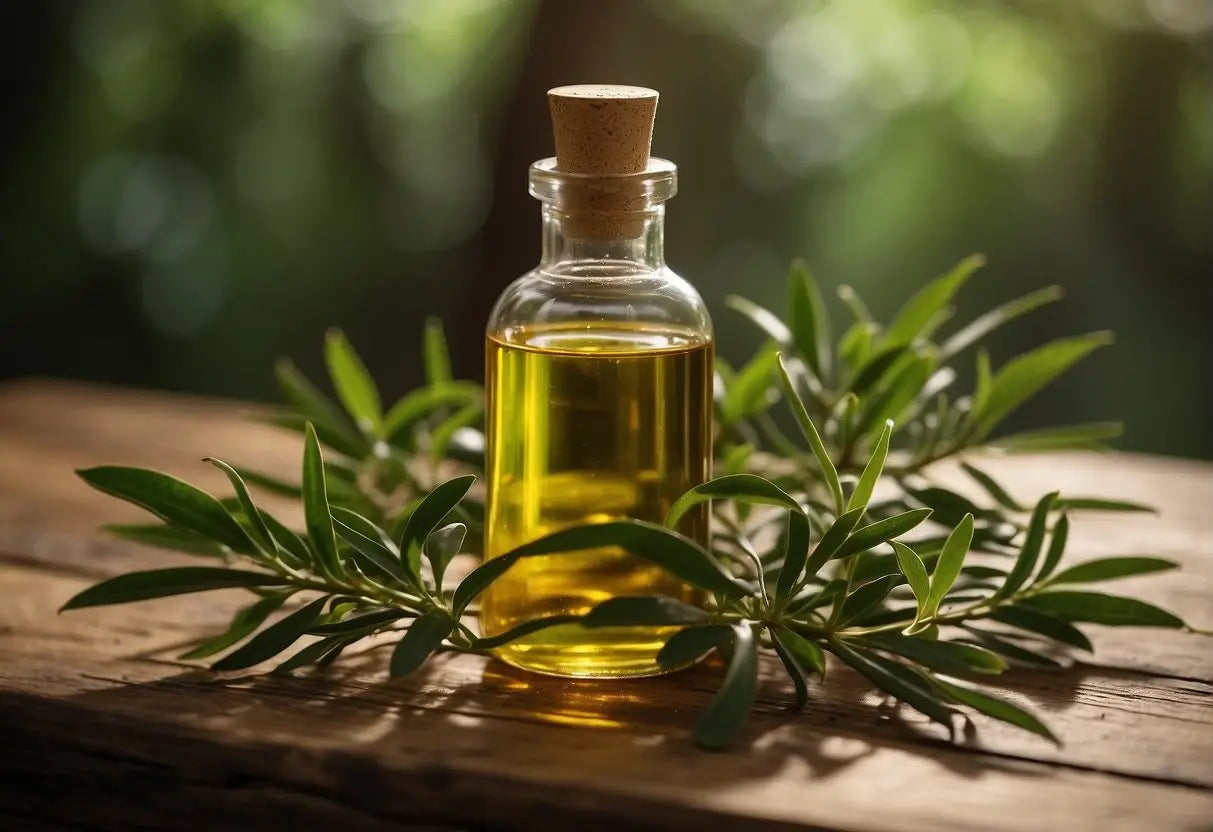What Does Tea Tree Smell Like
Shop our Pu Erh Tea collections!
Tea tree oil has a distinctly medicinal scent due to its high concentration of terpinen-4-ol, one of its most active ingredients. Here's a breakdown of its primary aromatic notes:
- Herbaceous: This is the predominant note, giving it a refreshing plant-like quality.
- Earthy: Grounding tones that remind you of rich, damp soil.
- Woody: A deep resonance similar to freshly cut wood.
- Minty: Hints of coolness that can invigorate the senses.
- Camphorous: A piercing, slightly medicinal aspect that is pungent and sharp.
The intensity of the tea tree aroma can vary, but it's typically quite potent and long-lasting. When you inhale it, you might notice it eliciting a clarifying and cleansing feeling, often linked to its purifying properties.
Bestsellers

Understanding the blend of these scents will help you discern quality tea tree oil:
| Primary Note | Attribute | Perception |
|---|---|---|
| Herbaceous | Dominant | Refreshing, natural |
| Earthy | Secondary | Grounding, familiar |
| Woody | Underlying | Sturdy, reassuring |
| Minty | Subtle | Invigorating, brisk |
| Camphorous | Identifiable Accent | Strong, slightly medicinal |
Your experience of tea tree oil may depend on your familiarity with these types of scents and how sensitive you are to aromatic compounds. Remember, a small amount goes a long way, so use sparingly to avoid overwhelming your senses.
Chemical Composition of Tea Tree Oil

Tea tree oil, derived from the leaves of the Melaleuca alternifolia, is made up of several compounds, each contributing to its characteristic aroma.
Key Components and Their Aromas
Terpinen-4-ol: This is the primary component of tea tree oil, known for its medicinal scent.
- Aroma: Herbal and earthy
1,8-cineole (Eucalyptol): Present in lower concentrations, it adds a fresh note to the scent profile.
- Aroma: Camphorous and cooling
Gamma-terpinene & Alpha-terpinene: These contribute to the oil's complexity with their spicy notes.
- Aroma: Spicy and pungent
Alpha-pinene & Beta-pinene: These have a woody and piney fragrance, reminiscent of pine forests.
- Aroma: Woody and piney
Volatility and Scent Profile
High Volatility Components:
- Eucalyptol
- Limonene
These compounds evaporate quickly, delivering an instant and sharp top note but dissipating rapidly.
Medium to Low Volatility Components:
These provide a lasting fragrance that makes up the body of the scent and remains on the skin longer.
Lao Ban Zhang
Comparative Scent Analysis

When you explore the aroma of tea tree oil, it's helpful to consider how it compares with other essential oils and its role in fragrance blends.
Tea Tree vs. Other Essential Oils
- Eucalyptus: The scent of tea tree oil is often compared to eucalyptus; both are camphoraceous, but tea tree is typically milder with a herbal back-note.
- Lavender: In contrast to lavender’s floral and sweet tones, tea tree oil offers an earthy and sharp aroma.
- Peppermint: Tea Tree smells less minty and cooling than peppermint; it exudes a warmth that peppermint lacks.
Tea Tree Aroma in Blends
- With Citrus Oils: When blended with citrus oils like orange or lemon, tea tree oil adds depth and grounding notes to the zesty freshness.
- With Woodsy Oils: Combined with woodsy scents such as cedarwood, it can enhance the natural, outdoorsy feel of the blend without overpowering it.
Influence of Extraction Methods on Aroma
Tea tree oil, primarily extracted from the leaves of the Melaleuca alternifolia plant, emanates a fresh, camphor-like fragrance. However, your sensory experience of its aroma can be significantly affected by the method of extraction employed in its production.
-
Steam Distillation: The most common method, generating a more vibrant and potent scent. Its high-temperature process preserves the integrity of the delicate compounds that contribute to the tea tree's characteristic smell.
-
Cold Pressing: Less prevalent for tea tree oil, yet when used, it results in a lighter, somewhat less intense aroma. This method can retain more of the subtle nuances that high temperatures may alter or destroy.
-
Solvent Extraction: Rarely used for tea tree oil, as solvents can introduce chemical notes to the aroma that are not naturally present in the plant. If utilized, expect a different scent profile compared to other methods.
| Method | Temperature | Aroma Intensity | Aroma Characteristics |
|---|---|---|---|
| Steam Distillation | High | Potent | Vibrant, True to Plant |
| Cold Pressing | Low | Mild | Subtle, Lighter |
| Solvent Extraction | Variable | Altered | Chemical Notes Possible |
The nuances in fragrance due to extraction methods cater to varied preferences and applications. Your selection might be influenced by the desired strength and authenticity of the tea tree aroma for your specific use.
Uses and Applications

Tea tree oil's versatile properties lend it to a variety of uses in aromatherapy, cosmetics, and household cleaning products.
Aromatherapy and Therapeutic Uses
Tea tree oil is commonly used in aromatherapy practices for its clear, refreshing fragrance, which is often described as medicinal with hints of mint and eucalyptus. You can find tea tree oil in diffuser blends aimed at purifying the air and providing a sense of respiratory relief. Furthermore, its use in massage oils is due to its believed properties that may help alleviate muscular pain and reduce symptoms of colds and flu.
- Diffuser blends: Mix with peppermint and eucalyptus oils for air purification
- Massage oils: Combine with carrier oils for topical application to soothe muscles
Cosmetic and Skincare Products
Your skincare routine can benefit from tea tree oil due to its reputation for possessing antimicrobial and anti-inflammatory qualities. It's often included in acne treatments for its purported ability to combat pimples and in shampoos to address dandruff.
- Acne treatments: Applied directly to blemishes or added to creams
- Shampoos: To relieve itchy scalp issues and reduce flaking
Household and Cleaning Products
Tea tree oil makes an appearance in your cleaning supplies because of its antiseptic properties. You can use it as an all-purpose cleaner or as a natural disinfectant for surfaces. It is also known for being an ingredient in pest deterrents due to its strong scent, which is unfavorable to many insects.
- All-purpose cleaners: Dilute with water and vinegar for general cleaning
- Natural disinfectants: Use to sanitize kitchen counters and bathroom surfaces
- Pest deterrents: Add a few drops to cotton balls and place in problem areas
Frequently Asked Questions

In this section, you'll find specific details about the smell of tea tree oil, its comparison to other scents, benefits, managing its intensity, duration of the scent in a room, and what certain smells may indicate about its quality.
What are the aromatic characteristics of tea tree oil?
Tea tree oil presents a fresh, slightly medicinal scent with sharp camphoraceous notes and a hint of woodiness. It is known for its distinctively clean and bracing aroma.
Is there a similarity between the scent of tea tree oil and eucalyptus?
Tea tree oil and eucalyptus share a common characteristic in their scents due to the presence of eucalyptol, which gives both a crisp, camphoraceous smell, although tea tree is typically seen as more earthy and herbaceous than eucalyptus.
What are the scent benefits associated with tea tree oil?
The scent of tea tree oil is often associated with purifying and revitalizing effects, making it popular for use in aromatherapy. It may also support respiratory health and enhance focus.
How can one neutralize the scent of tea tree oil if it's too strong?
If the scent of tea tree oil is too overpowering for you, it can be diluted with a carrier oil or neutralized by ventilating the area. Blending it with softer, citrusy or floral essential oils can also help moderate its intensity.
How long will the scent of tea tree oil typically persist in a room?
The scent of tea tree oil can linger for several hours and may persist for a day, depending on the amount used and room ventilation. Its volatile compounds evaporate over time, so the scent will gradually fade.
What does it indicate if tea tree oil has a smell resembling gasoline?
If tea tree oil smells like gasoline or unusually pungent and chemical-like, this may suggest contamination or oxidation. Properly distilled and stored tea tree oil should not have such an odor, and in such cases, it's advisable to avoid use.
← Older post Newer post →











